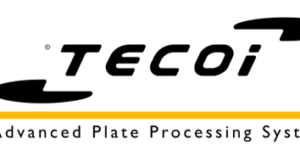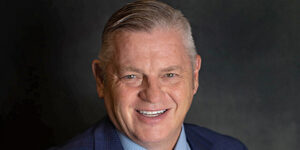Metal-Cored Electrode Improves Welding Travel Speed
Fought & Company relied on a solid electrode in its submerged arc welding process for bridge fabrication applications until a composite metal-cored electrode from Hobart Brothers improved their welding travel speed by 40 percent.
Posted: February 12, 2013
This company relied on a solid electrode in its submerged arc welding process for bridge fabrication applications until a composite metal-cored electrode improved their welding travel speed by 40 percent.
Fought & Company‘s 340,000 sq ft facility in Tigard, OR is the birthplace of many recognizable structural steel and bridge projects in the Pacific Northwest.
Founded in 1949, Fought is responsible for portions of the retractable roof on Safeco Field in Seattle, a 120,000 sq ft steel and glass canopy at Portland International Airport, and over 12,000 tons of steel bridges on I-15 in Salt Lake City, UT.
The company relies on automatic submerged arc welding (or sub arc) to fabricate 90 percent of each bridge that comes through its facility. Sub arc, like all welding processes, joins metals by fusion. Sub arc differs, however, because its shielding is provided by a granular flux material.
Fought had traditionally performed this process with a solid electrode (AWS A5.17, classification: EM12K), yet recently explored switching to Tri-Mark‘s Metalloy EM13K-S (AWS A5.17, classification: EC1) composite metal-cored electrode in an effort to increase productivity without impacting key quality elements of the weld.
That exploration led to a complete wire changeover on the sub arc process in which weld travel speed increased 40 percent.
“We’ve gone from running a single pass, 5/16 in fillet weld with a travel speed of 12 ipm to running that single pass 5/16 in fillet weld anywhere from 16-17 ipm,” said Steve Fugate, the quality assurance manager of Fought. “That was unachievable with the solid electrodes without getting bead profile problems or undercutting at the top toe of the fillet weld.”
BUILDING A BETTER BRIDGE
Fought fabricates each bridge in its yard, then disassembles it for shipping to its final erection site. Each full penetration weld undergoes volumetric testing (either x-ray or ultrasonic) to ensure integrity. Recent projects have included the new Sixth Avenue rail bridge in Denver and the Nisqually River trestle for Tacoma, WA.
The majority of bridge girder welds, such as the web to the flange, are welded with automatic sub arc. Automatic welding eliminates starts and stops over the course of a weld, thus eliminating potential sources of discontinuities and weld failure.
Automatic sub arc welding also offers a high deposition rate and requires all welds to be performed in the flat or horizontal position. “Sub arc offers us high deposition and extremely good mechanical properties,” noted Fugate. “And not having the welder wearing a hood as he welds for 140 ft is a big benefit (in minimizing physical strain).”
The company set out to increase its productivity without impacting key elements. Considerations for a new electrode included a need to increase speed and deposition while preventing top leg undercut on fillet welds and maintaining and/or improving the required impact properties (D1.5 Bridge Code) on full penetration welds.
Fought also tests to Zone 3 Charpy requirements to work on Alaska’s North Slope.
COMPOSITE METAL-CORED WIRE PREVENTS UNDERCUTTING FOR FOUGHT
In searching for a new electrode, one of this fabricator’s greatest concerns was preventing undercut in fillet welds. Undercutting is a groove melted into the base metal adjacent to the weld toe or weld root and left unfilled by weld metal.
Composite metal-cored electrodes, like Metalloy EM13K-S, have better starting characteristics and greater wetting action compared to solid electrodes. The new electrode also provides excellent arc characteristics, smaller molten droplet transfer and a wider weld projection area.
This typically helps to bridge gaps better, but in Fought’s particular application it helps improve the fillet weld profile, thus eliminating undercutting.











